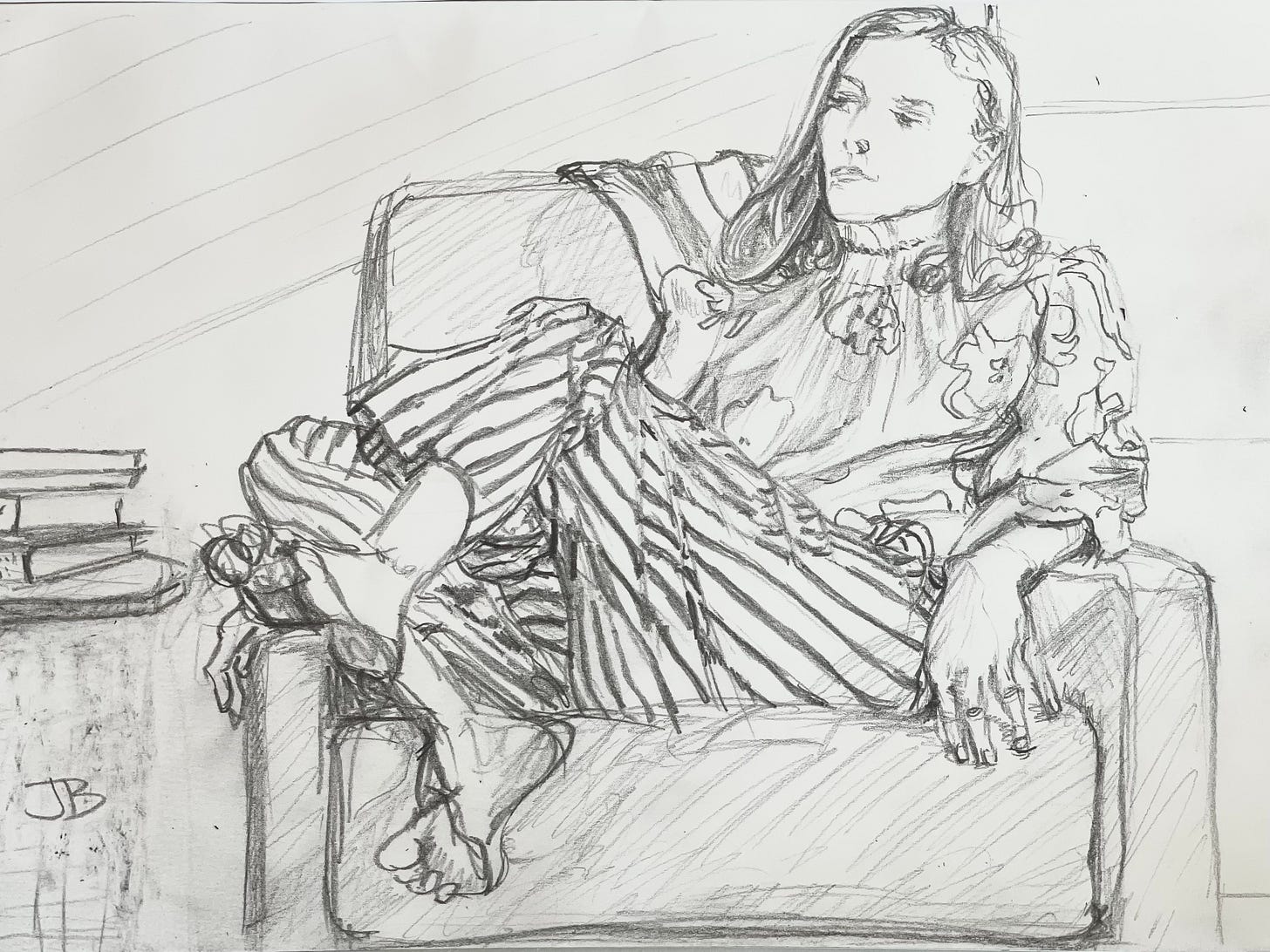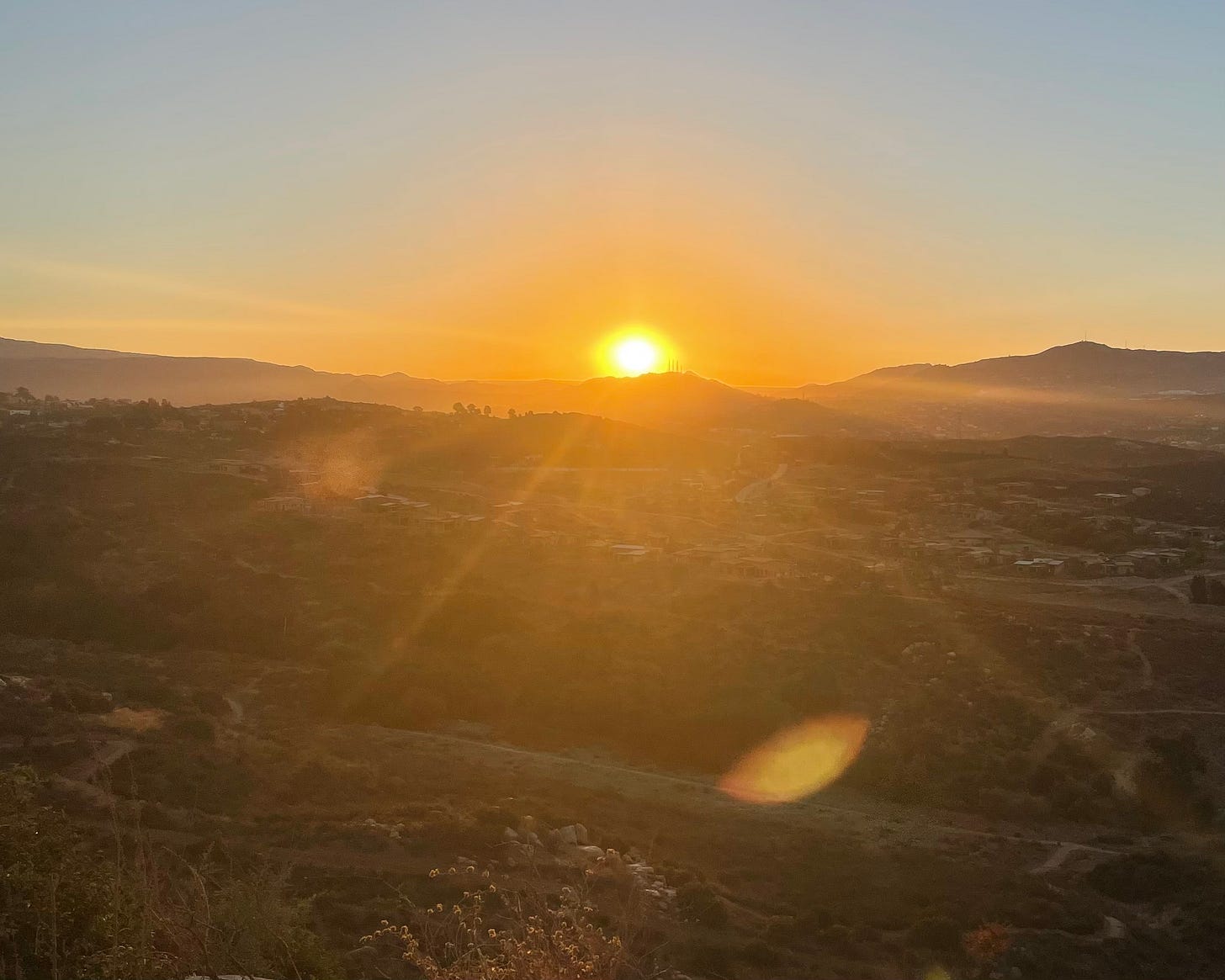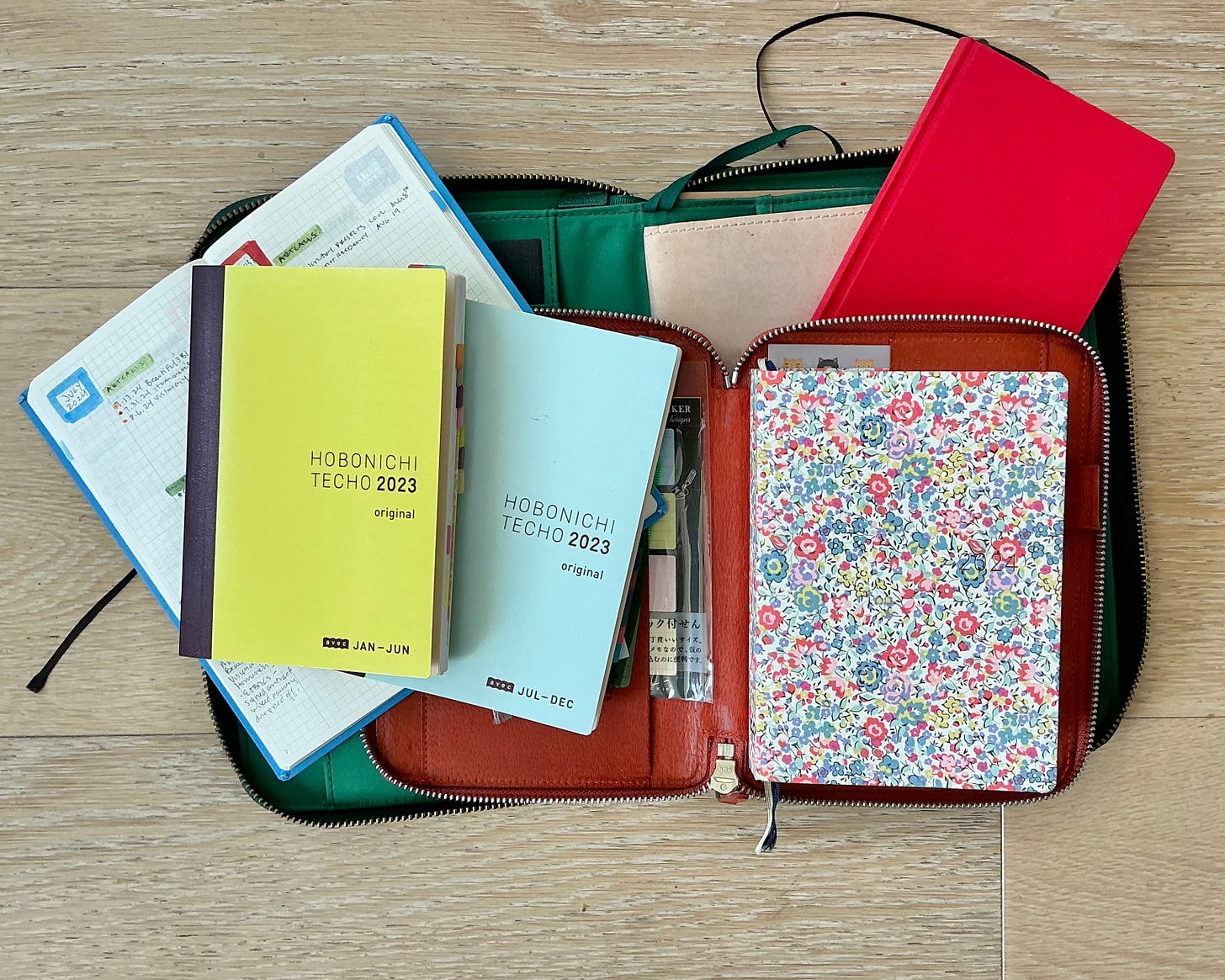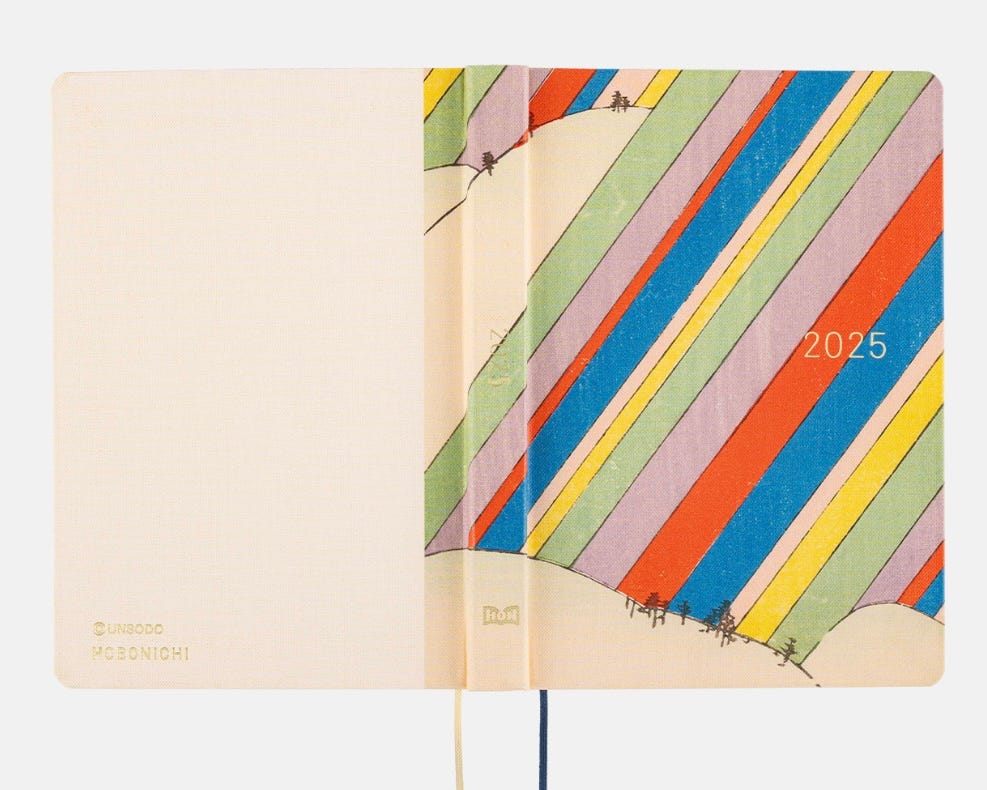Thursday, September 11, 2024
Weekly Wrap:
Last week I spent on a family vacation to Rancho La Puerta where I took daily sunrise hikes on Mount Kuchumaa, was healed by sound baths, and listened to nutrition talks about the importance of sleep while I struggled to get any sleep. I met a slew of fantastic and interesting people, spent quality time with my mom and sister, ate literal piles of fruits and vegetables, and drank endless amounts of water (and took what felt like hourly trips to the bathroom) trying my best to stay hydrated in the 100F+ weather. My apologies for missing last weeks newsletter. I planned to write about Hobonichi Techo for the 2025 release week ahead of my trip but did not get it done before departing. Anyway, a week post Hobonichi’s 2025 release let’s now chat all about Hobonichi.
Hobonichi techo translates to almost daily notebook. It originated in 2001 from the staff at Hobonichi Itoi Shinbun (“Almost Daily Itoi Newspaper” a blog started by Shigesato Itoi in 1998) desire to create a notebook/planner that they would want to use. It is now in its 24th year! Having been refined and expanded to 5 basic types, the original, the Cousin, the Weeks, the day-free, and the 5 year. There are endless YouTube videos of people demonstrating how they use (or fail to use) the various formats, cooing over the Tomoe River paper which is a wonder of engineering, and pining over different covers and accessories. The format is flexible and allows users to make use of it how they want: as a planner, a scrapbook, journal, sketchbook, habit tracker, anything one can dream! And maybe what is special about the techo is that it becomes a little document of one’s “almost” daily life lived.
I was introduced to Hobonichi techos via YouTube videos sometime during our safer at home days. I love paper, stationary, and pens and had been dipping my toe in and out of bullet journaling for a number of years so it was inevitable that I would eventually be pushed Hobonichi content. 2020 was a funny time and my introduction was YouTube videos of people puzzled by what to do with their planner now that there were no plans. Looking back I realize it might have been a really great way to both pass and document the unprecedented times but I waited for the 2022 release when the world was beginning to open more broadly. For my first Hobonichi I decided to go with the most basic and approachable format, the Weeks. I have since used the Avec original which is the A6 techo (calendars followed by daily, dated pages) broken into two books for better portability, the Day-free which has monthly calendar spreads followed by undated pages, and the A6 Hon which uses the original techo format but is packaged in a cuter, more durable binding—I love my 2024 Liberty Fabrics version. In 2024 I used the Hon for a catch all and a Weeks dedicated solely to art things. This worked well for me. My biggest hurdle in using these techos is trying to read my subpar (a generous characterization!) handwriting—perhaps that is something I should take the time to work on in 2025!
And about 2025, the 2025 Hobonichi release was September 1, 2024 at 11a Japan time, meaning it was at 7p August 31 where I was located in Tecate, MX at Rancho La Puerta on the evening of my arrival there. At about 8p I was stumbling around in the dark searching for WiFi access while my mom and sister were in bed asleep. It took awhile but I eventually discovered that there existed no WiFi in our casita. Oh. I looked at the Hobonichi website on my phone and alas the item my heart was set on—the A6 Unsodo Bijutsukai Rainbow Hon—had sold out. Womp womp. There was a voice in my head “there will be a restock.” And yes there was!
Hobonichi does collaborations with a number of artists and entities putting out new designs biannually in Fall and Spring. The 2025 Fall collection that has my heart, my breath, and my eyes is the Unsodo Bijutsukai collaboration. Unsodo is a Kyoto publisher of woodblock printed books! It was founded in 1891. A hundred years ago in the Meiji era Japanese craft became quite popular in the Western world. The high demand of these exported crafts created huge demand for more designs. The artist Sekka Kamisaka filled this demand by creating a number of designs and publishing a design magazine to be used as reference in kimono and ceramic shops—this became Bijutsukai. Demand was so high for new designs that open art calls were held to fill the need and the Bijutsukai was published monthly!
Here is a flip through of Unsodo’s Bijutsukai woodblock printed book:
“The best way to preserve Bijutsukai is to use them as active designs instead of just keeping them as something old and precious.” This idea was exactly the concept of the “Unsodo x Hobonichi Techo 2025” collaboration.”
I have placed my Hobonichi order and look forward to receiving my items. I have a feeling I both ordered too much and also not enough! I am also a bit worried that a few items order as gifts for others I will want desperately to keep for myself.
The Hobonichi Techo is for you to fill with every aspect of your life that you’d like, day by day, from the mundane to the milestones. You can read back through it some day in the future and see how it turned into a one of a kind book that’s uniquely your own.
The Hobonichi Techo is a Life Book that we hope makes your Life just a little bit brighter.
Happy Hobonichi season everyone!
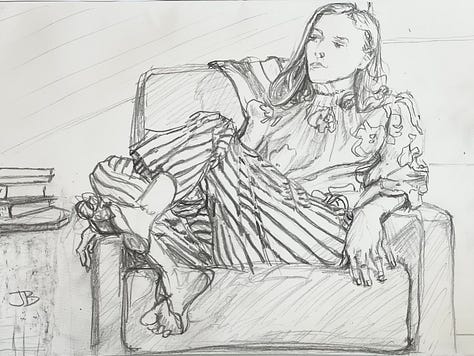
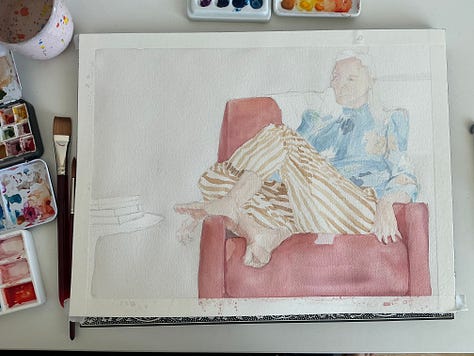
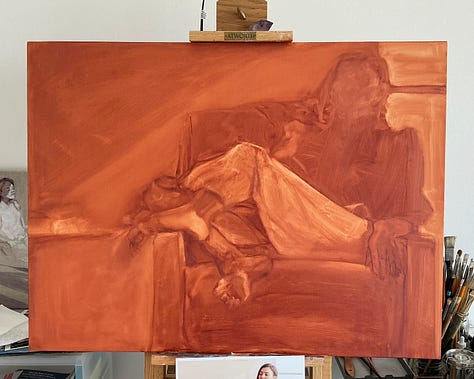
Also this week I’ve been working towards an artwork to include in my entry to the Bennett Prize. Above is a sketch, a watercolor in progress, and an underpainting.
Open call:
Fee: $40
Due: Oct. 4, 2024: Call for Entries closes at 11:59 p.m. MST.
Entry is digital, through the CaFÉ website. Search keyword “Bennett.” A free CaFÉ registration is required. Artists should submit a minimum of three (3) and no more than five (5) artworks and one detail, for a total of four (4) to six (6) images
THE BENNETT PRIZE, created in 2018, awards $50,000 to a woman artist to create her own solo exhibition of figurative realist paintings, which then travels the country. The Prize propels the careers of women painters who have not yet realized full professional recognition, empowering new artists and those who have painted for many years. The Prize expands opportunities for the public, who may not be familiar with figurative realist painting, to learn more about the creative vision of talented women painters in this increasingly popular genre. In 2018, the inaugural year of The Prize, there were 647 entries. In 2020 and 2022, the number of entries continues to grow.




